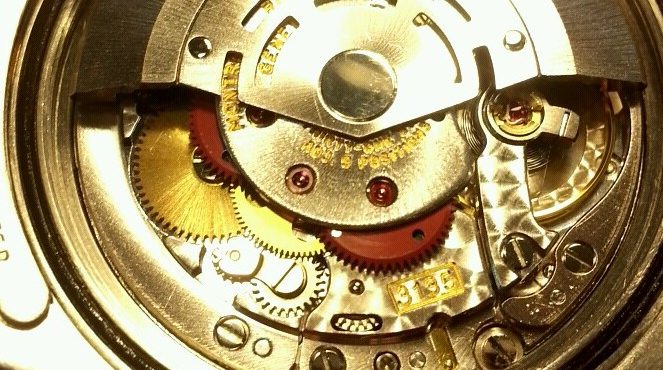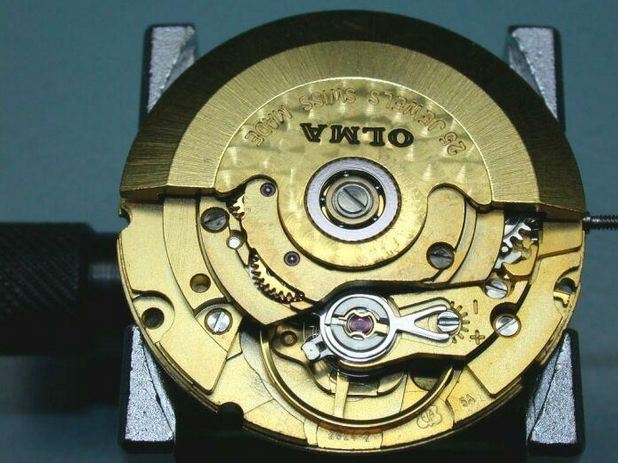This week we are going to go over the myth of how the power reserve on an automatic watch works.
Is the power reserve that I read about on the internet correct?
The 38-40 plus hour power reserve that you read about in chat rooms or in other places on the internet is often misleading.
The power reserve on an automatic watch is going to depend on the quality of the watch, is it clean and oiled properly, is the mainspring properly lubricated, is the customer wearing the watch 12-14 hours a day and staying “active,” etc.
No two people have the same activity level each day, some walk to work, some drive. Some people work at a desk all day, some do manual labor etc.
You can’t compare apples to oranges when talking about power reserve on a watch.
For me, if you wear the watch all day, take it off in the evening, it should be on time the next morning approximately 12 hours later.
Expecting a watch to run for a day-and-a-half on just a few hours of wear is asking a lot of any mechanical watch.
Here is more info on how an automatic watch works:
Have You Ever Wondered How an Automatic Watch Works? Here’s How.
POWER RESERVE:
According to ETA, it takes a minimum of 27 winds of the crown to fully wind the movement. The watch community seems to agree on 30-40 turns being sufficient to reach full power reserve. In contrast, when depending primarily on the rotor (oscillating weight) to wind the movement, it can take up to 1,250 turns or 1 hour and 30 minutes of the movement in motion.
Windmills
Does a windmill make electricity when the wind is not blowing very hard? The short answer is that if there is a light wind, they produce less power. But if the wind speed doubles, then a windmill could produce eight times more power under the appropriate conditions.
How does a watch compare to a windmill?
Back in the old days, we never talked about power reserve. From my time at The Bulova School Of Watchmaking where I went to school or for the 22 years that I spent working with my dad at our Jewelry store, we rarely had an issue with power reserve on an automatic watch. We did lots of automatic watches in those days. We would overhaul a watch for a customer, he normally wore it all day long, took it off at night, put it on the next morning before work, if it was running at that time (with about a 9-10 hour power reserve) we were all set and life was good. Those customers also would set their watches just about everyday. They would get up in the morning, take a quick look at the clock in the kitchen, set their watch and off they went. NEVER did anyone say their watch was off by three seconds a day, or that they did not have a 36-hour power reserve!
Unfortunately, today’s customers are of the opinion that wearing the watch for about 8-10 hours a day and sitting at a desk is going to wind their auto enough for it to keep running for well over 24 hours.
The amount of activity that you put into an automatic watch will determine its power reserve.
People think that a Rolex from the 1970’s should still run as well as it did when new!! I am not sure what world they are living in, but nothing that is 50 years old is going to perform as it did when new. (How is that 8 track tape player working today, or maybe your old VCR???)
Some of the things I have heard when a customer tells me their auto is not working well:
I just had knee surgery and not moving well. I am 85-years-old and using a walker. I just had Covid and have been in the house for three weeks working from home now and not getting out much. I have a heart condition and can’t get around as well. It is winter here and not going out as normal because it is cold.
When I ask these customers how their activity level is, their normal reply is, “I am active as normal ” What is normal?
I normally walk four miles a day with Jan and Charley. This winter because of the ice and lots of snow, on some days we cut it down to two miles a day. Is my watch going to have the same power reserve on the two-mile walk day as it does on the four-mile walk day? I think not.
Charley Picture of the week: Having her favorite bedtime snack of peanut butter with Tom



